Issam Kourbaj @ Kettle’s Yard & The Heong gallery
2nd Mar 2024 – 26th May 2024
Urgent Archive
Forced migration, displacement and the casualties of war take centre stage in this remarkable exhibition by Syrian artist Issam Kourbaj. The language of grief, suffering and longing is burnt, often literally, into many of his pieces. Fire, both a symbol of destruction and regeneration. Paints and inks smeared, scraped and scrawled across books and loose pages, bearing witness to the barbarities that humans can inflict on each other.
It’s impossible to look at these works and not get a sense of the trauma etched in to a whole region. A trauma experienced both by those who remain in war torn countries, but also by those who, like Kourbaj, have managed to leave.
Although much of the work is in response to the start of the March 2011 uprising in Syria, Kourbaj casts his critical and conceptual eye much wider. The plight of migrants crossing turbulent seas in small boats, is captured devastatingly in pieces such as ‘Dark Water, Burning World (155 moons and counting…)’, ‘Barbed Europe: Migrant Shipwrecks’ and ‘Keep Them at Bay’ and then as if to highlight, even more so, the contemporary relevance of his work, Kourbaj presents his audience with ‘All But Milk’, a searing commentary on the innocent casualties of the ongoing war in Gaza.
But Kourbaj is an artist and as such he is aware that to make people look and listen to what he has to say, the work has to have an aesthetic quality that, despite the subject matter, intrigues and draws them in, rather than one that repulses. Many of the works and installations are beautifully crafted and arranged. Each material used has a purpose, nothing is frivolous, superfluous or redundant and as a result the whole exhibition, laid out across two sites, is tremendous.
The exhibition really does need to be experienced and seen, however, below are just a few of Kourbaj’s key works.
‘Dark Water, Burning World (155 moons and counting …)’, (2016 – present)
The Heong Gallery
In the Fitzwilliam Museum, Cambridge are three 400BC Syrian artefacts depicting Goddesses on boats in the Mediterranean.
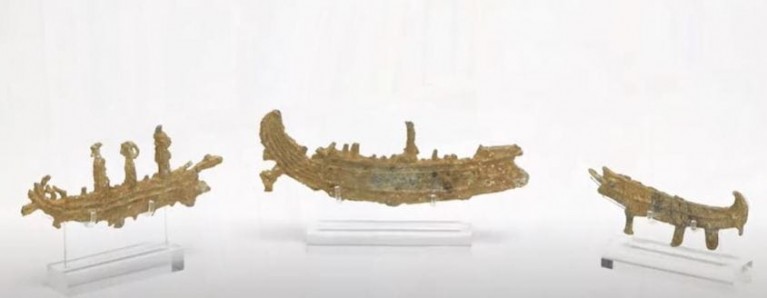
Kourbaj brings us to the present with his contrasting work. Boats crafted from old bicycle mud guards forming a flotilla.
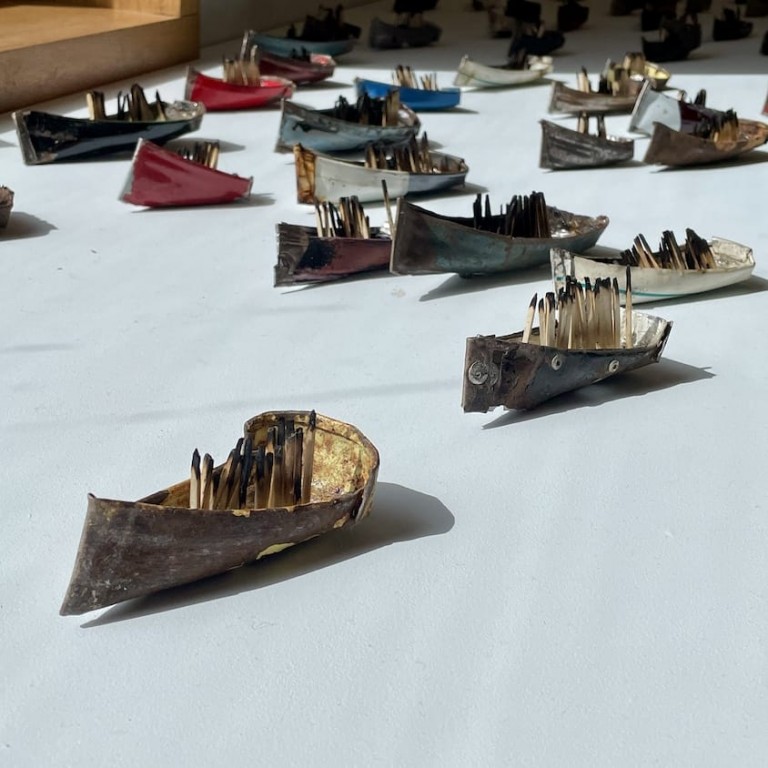
‘Dark Water, Burning World (155 moons and counting …)’
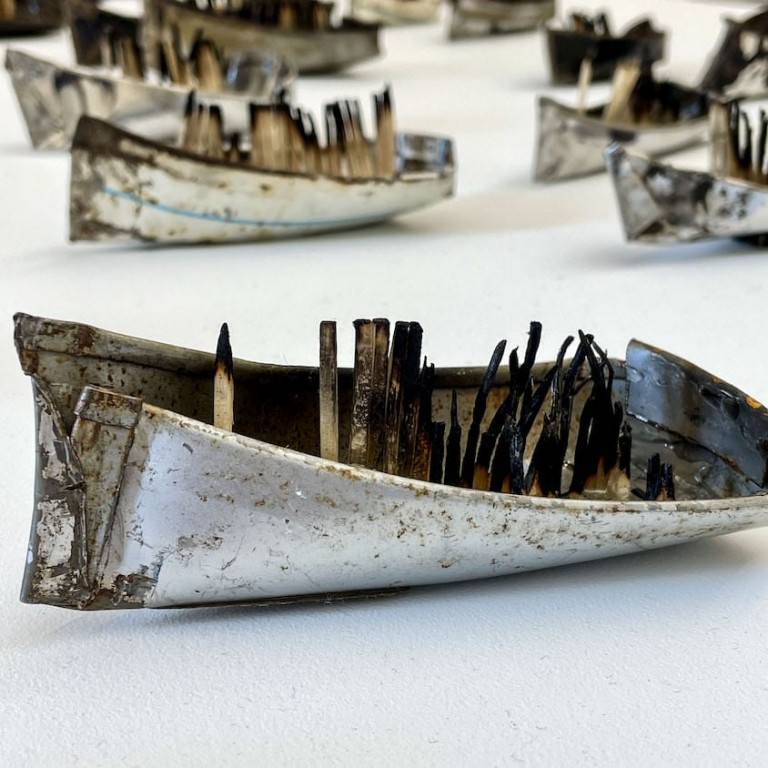
‘Dark Water, Burning World (155 moons and counting …)’ - Detail
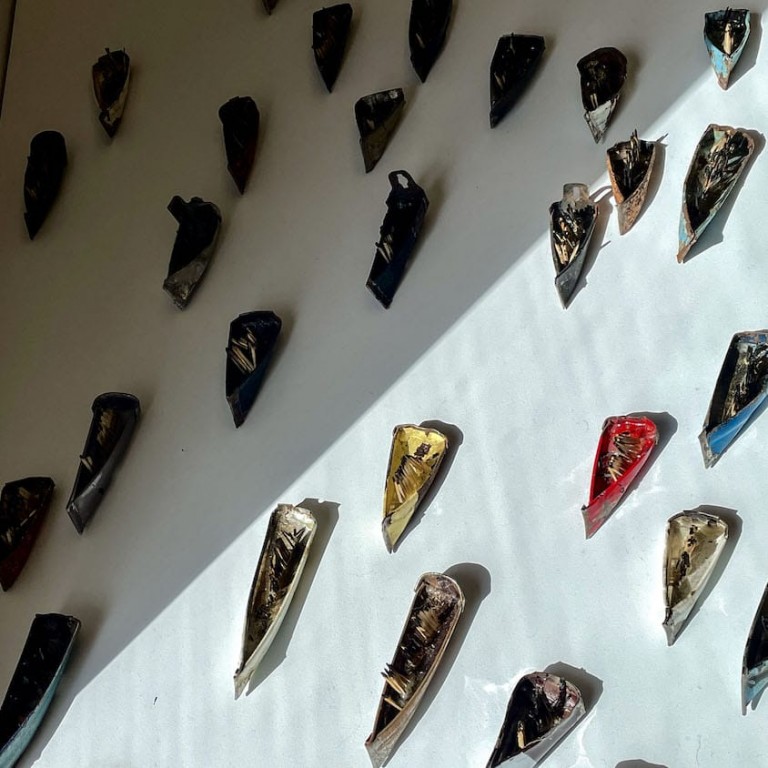
‘Dark Water, Burning World (155 moons and counting …)’ - Detail
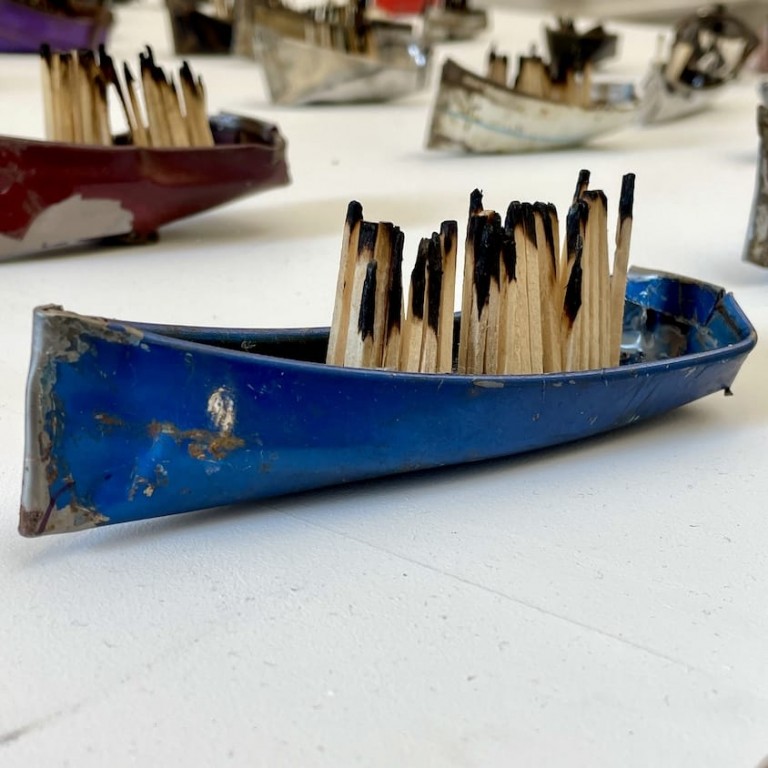
‘Dark Water, Burning World (155 moons and counting …)’ - Detail
The symbolism is clear. The flotilla is not one of celebration, but one of flight. Boats fleeing darkness and heading towards the light. Instead of Goddesses, the boats carry bundles of burnt matches. These are refugees bearing the scars of trauma, trauma of war. The partially burnt matches do however offer hope, they are not completely destroyed.
The title ‘…(155 moons and counting)’ referring to the number of full moons since the start of the Syrian uprising in March 2011. With each full moon an additional boat is added to the flotilla.
The work is undeniably clear in its message. The materiality of the piece adding to its narrative of the fragility of life of those choosing to escape war. Such is its power and relevance that it was chosen by the BBC, in its joint project with the British museum ‘A History of the World in 100 Objects’ as object 101.
‘Barbed Europe: Migrant Shipwrecks’ (2023)
The Heong Gallery
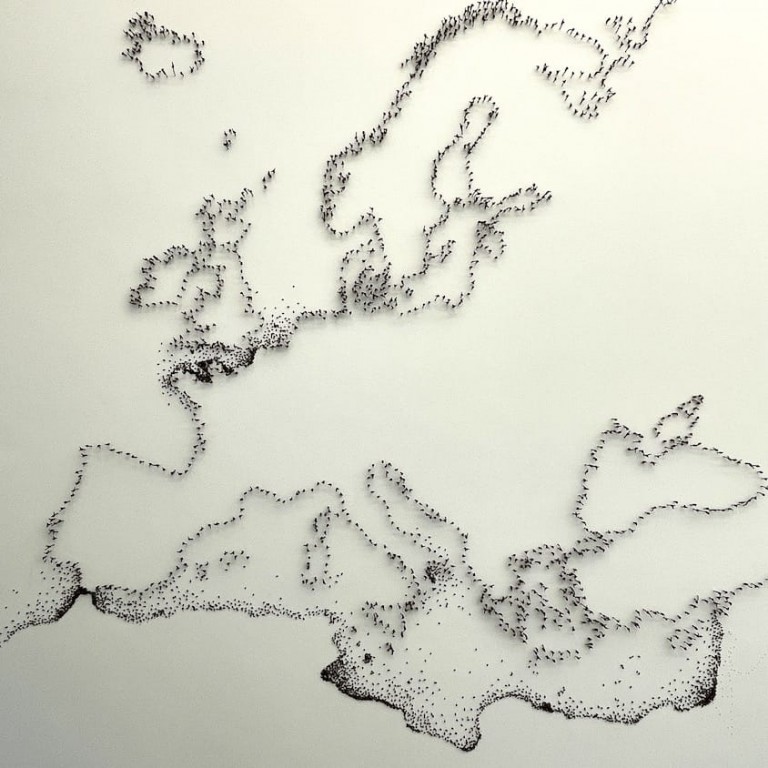
‘Barbed Europe: Migrant Shipwrecks’
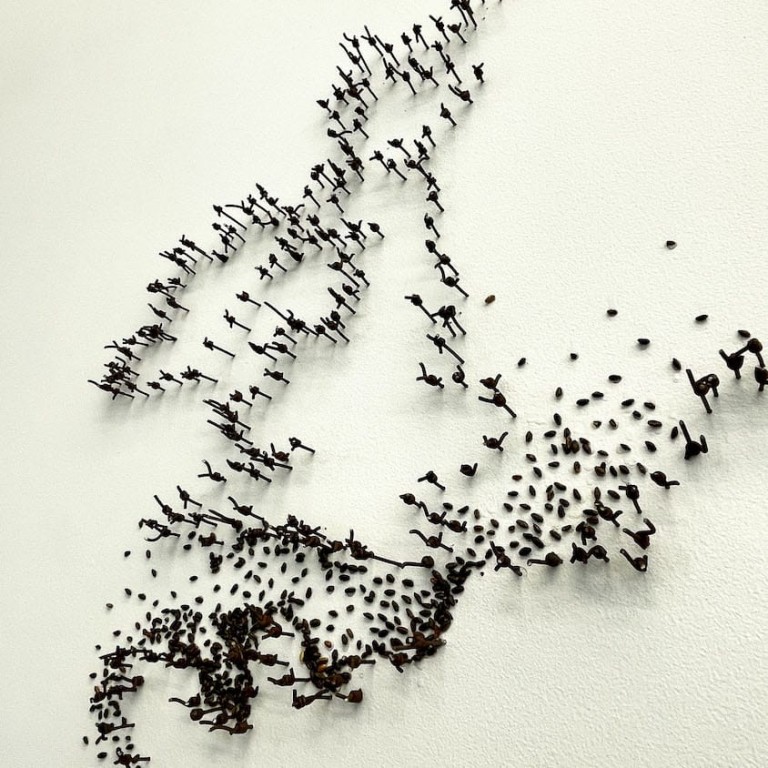
‘Barbed Europe: Migrant Shipwrecks’ - Detail
Europe, a destination for so many fleeing war. Perceived as a safe haven, the reality, all too often is a continent that does not welcome the outsider. Outsiders, it could be said, fleeing wars stoked by European nations, amongst others. The outline of Europe depicted in barbed wire. The Mediterranean Sea and Channel crossing littered with charred seeds representing those that have lost their lives seeking a safer land. Seeds often a representation of growth and the future, here depicting the extinguishing of that potential.
‘All But Milk’ (2023-2024)
Kettle’s Yard
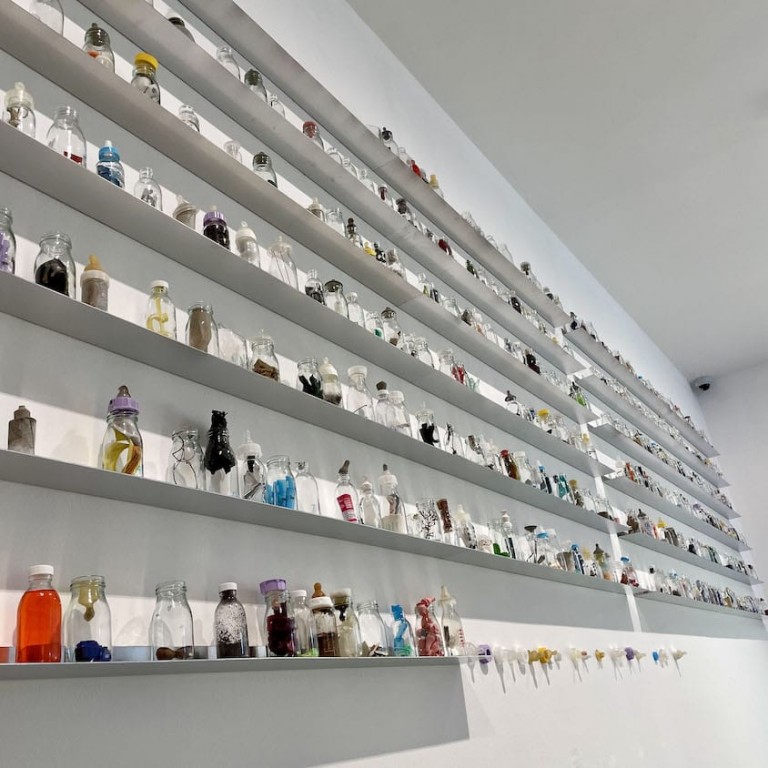
‘All But Milk’
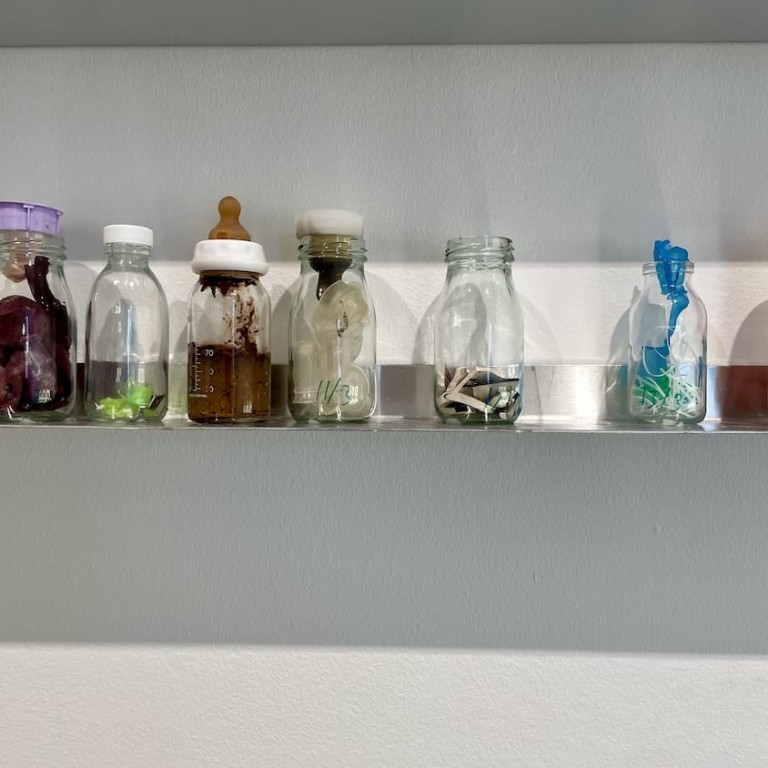
‘All But Milk’ - Detail
Throughout the exhibition Kourjab is nurturing empathy from his audience. Nuanced allusions to suffering and longing. With ‘All But Milk’ the anger is palpable. An angry finger pointing at us and our Government’s determination to ignore the slaughter of toddlers and babies in the current war in Gaza. Row upon row of baby bottles lined up as if a cabinet of curiosities. Baby bottles, which normally filled with milk, here filled with dead flies, burnt bread, pulled finger nails, rubble, broken glass, in fact with anything but milk. Babies on a diet of the remnants of conflict.
Next to it a scribbled inventory of each bottle and the day it was filled. A witness to our blindness.
‘Is it from a grain of wheat that the dawn of life burst out … and also the dawn of war?’ (2023 – 2024)
Kettle’s Yard
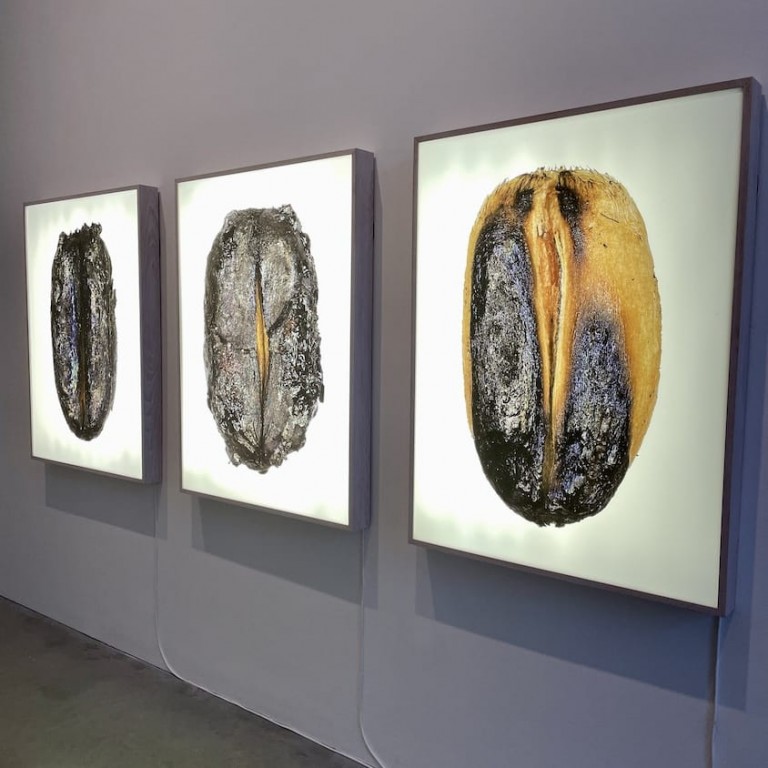
‘Is it from a grain of wheat that the dawn of life burst out… and also the dawn of war?’
The seed, necessary for life. A provider of food. Yet its scarcity in times of war, or its deliberate destruction paradoxically also makes it a potential symbol of death. By burning three seeds, magnifying their size and presenting them in lightboxes, Kourbaj forces the viewer to reflect on their fragility and the fragility of life in times of war.
‘Our exile grows a day longer and a day closer is our return’ (2024)
Kettle’s Yard
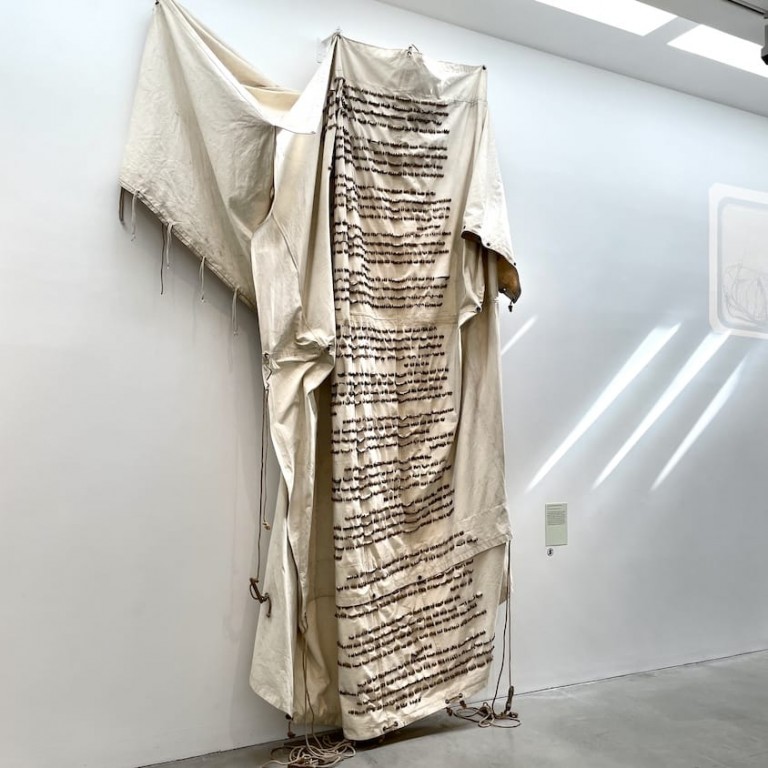
‘Our exile grows a day longer and a day closer is our return’
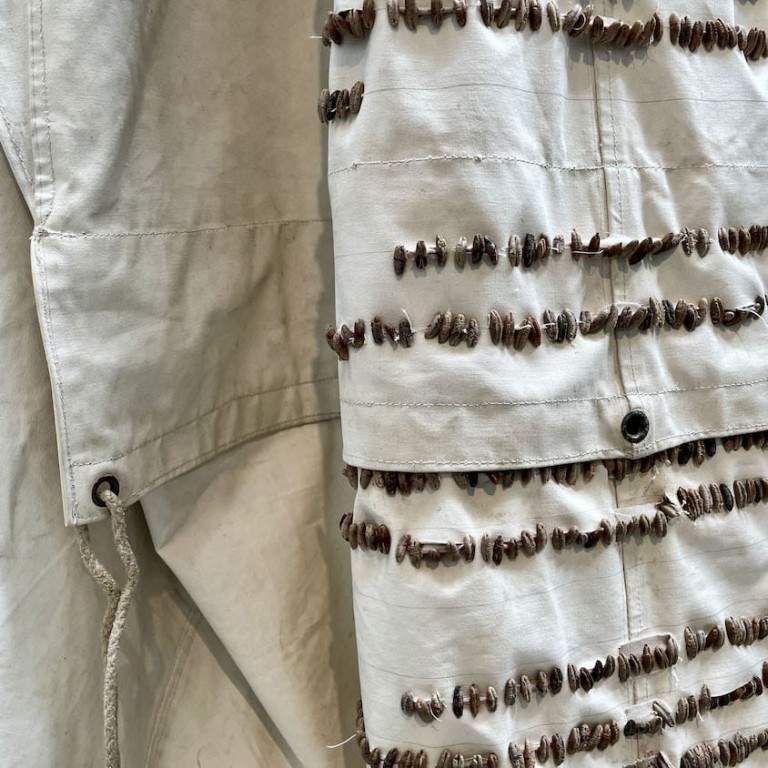
‘Our exile grows a day longer and a day closer is our return’ - Detail
At times the simplest concepts are the most effective. This is one such work. Documenting the plight of the displaced through war. Conceived as a marker of time since the start of the Syrian uprising on 15th March 2011, it appropriates the ubiquitous tent used by refugees for shelter, except here the tent is damaged and therefore cannot serve its purpose. Each day a date stone is threaded on to the fabric of the tent. Row after row of dried stones line the surface, resembling the tallys used by prisoners on cell walls to keep track of time; The Syrian people prisoners to wider geopolitical forces outside their control.
The question posed by this viewer is, how much more of this tent will be covered in date stones, before Kourbaj can stop?
‘Urgent Archives: Written in Blood’ (2019)
Kettle’s Yard
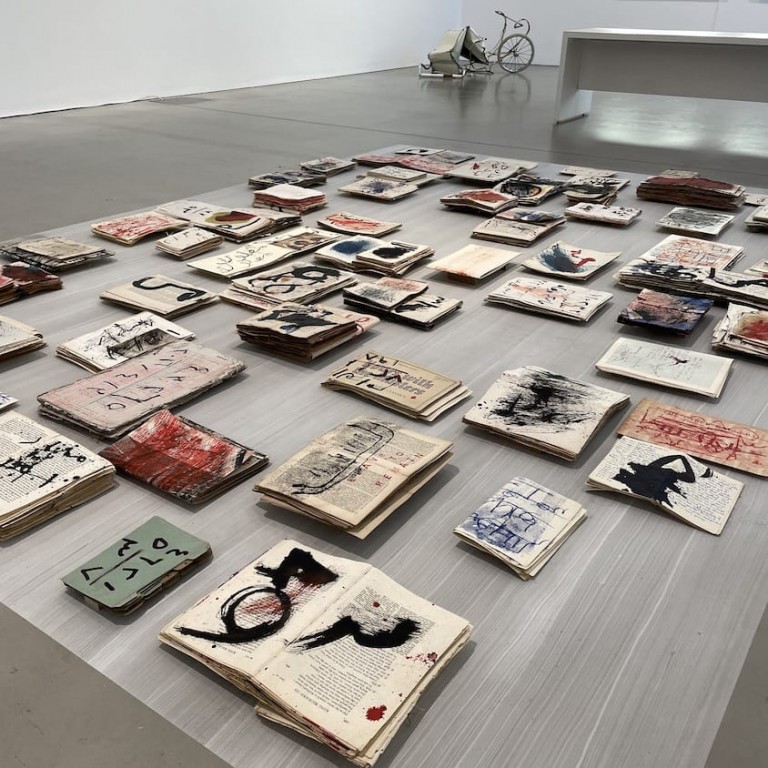
‘Urgent Archives: Written in Blood’
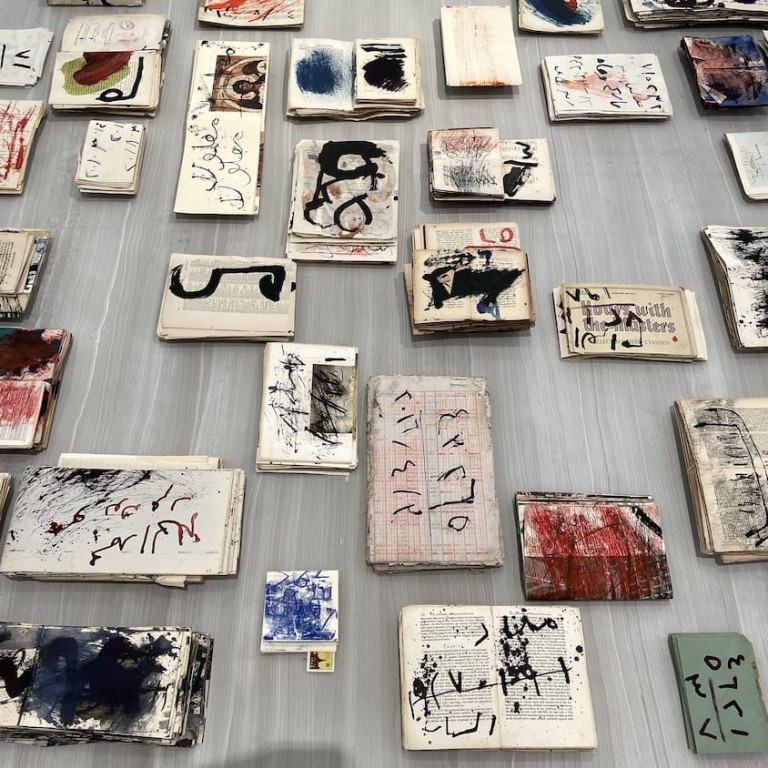
‘Urgent Archives: Written in Blood’ - Detail
Kourbaj here gives us an insight into the ingenuity of prisoners in Syrian jails, who wishing to let their families know of their whereabouts and existence, would smuggle out their names on fragments of clothing, etched in blood and rust, sewn into the cuffs of released prisoners. Kourbaj chooses books and loose pages to represent these acts. Painted with purpose, these books create a picture of urgency and determination. It doesn’t matter what gets out as long as something does so as to remind the world of their existence.
‘Precarious Passage’ (2023 – present)
The Heong Gallery
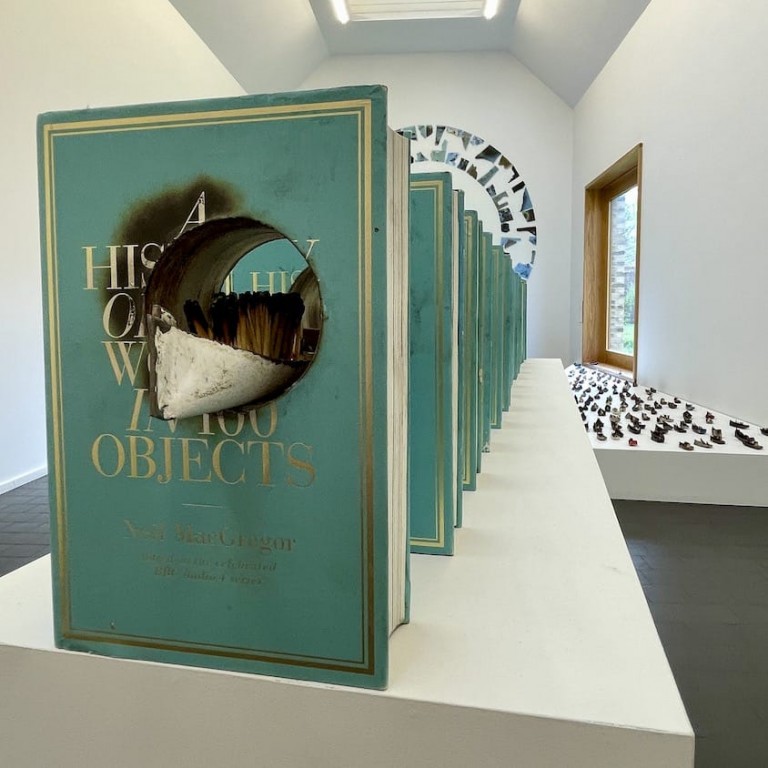
‘Precarious Passage’
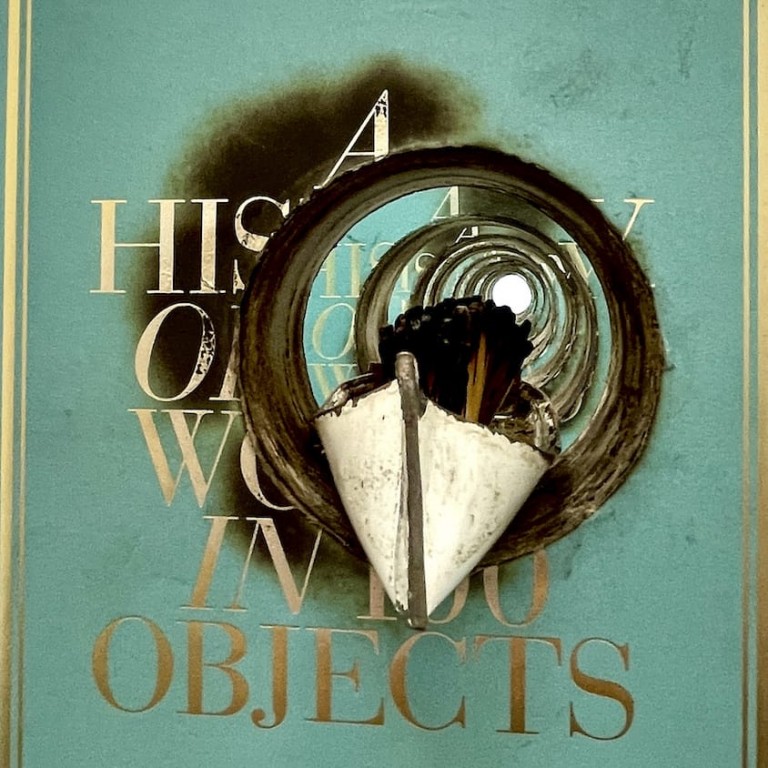
‘Precarious Passage’ - Detail
Another visually arresting work. Thirteen identical books, one for each year of the Syrian uprising, standing on their ends, each with a large hole burnt through its middle and arranged in such a way, that when seen from one end the viewer can see through all thirteen books. A tunnel with charred edges. Emerging from the first book, one of Kourbaj’s small boats with burnt matches. The choice of book is of course not random. MacGregor’s book accompanying the BBC series ‘A History of the World in 100 objects’ documented objects and artefacts that have shaped humanity. Kourbaj’s work ‘Dark Water, Burning World’, as mentioned earlier, became object 101. The boat emerging scarred, having sailed the unpredictable yet troubled waters of time. Yet I see this as one of Kourbaj’s more uplifting and optimistic works. The boat although damaged is still sailing into the future.
‘Keep Them at Bay’ (2023)
The Heong Gallery
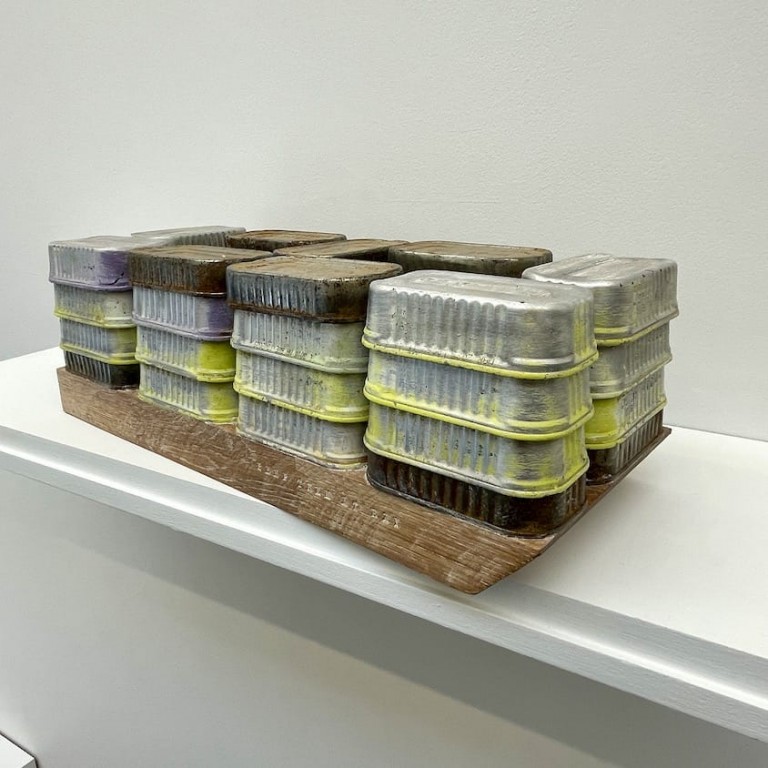
‘Keep Them at Bay’
Kourbaj, again barely attempts to hide or disguise his anger here. The Bibby Stockholm, the Government answer to the asylum seekers arriving on our shores. An ageing barge converted, in essence, into a floating prison and death trap. Here depicted as piles of sardine tins on a block of wood.
There is no ambiguity in his message.
There are occasions when an exhibition takes you completely by surprise. I hadn’t heard of Kourbaj before. All I had seen was the exhibition poster depicting a close-up of one of the pages of the ‘Urgent Archives: Written in Blood’ work. That was enough to pique my curiosity but gave little insight into the depth and scope of the work on show. What Kourbaj has managed to achieve is produce work that is both conceptually rigorous and of profound relevance to the current age, a rare combination.